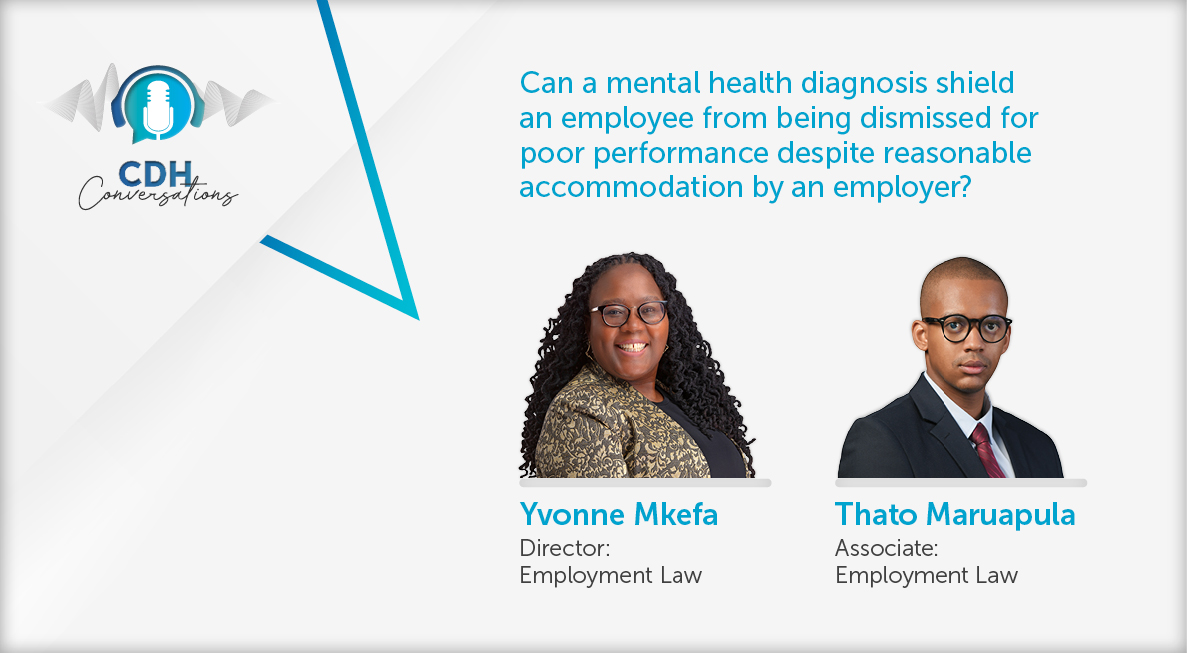How to rule the GloBE: OECD/G20 commentary on Pillar Two model rules for 15% global minimum tax
Free-to-use digital services provide a good example of the disruption caused by digital business models to existing tax rules. With free-to-use digital services there is no transaction between the service provider and consumer. The payment for the service provided is not how the service provider generates its income. Advertising revenue is often a significant part of how such businesses earn income. However, it is indisputable that the provision and consumption of the free service is at the core of its trading activities.
This, along with the international mobility of the digital service provider’s intellectual property (including branding, collected data and software), allows the value generated by a country’s advertising eyes to be legally present and taxed in a different country. Meaning that the country which taxes the income does not necessarily have to host the digital service provider’s physical presence or the consumers of the service. Conversely, the countries which in fact host significant real-world economic nexuses for the advertising income earned through the provision of free services do not gain a taxing right.
Progress to date
The OECD/G20 Inclusive Framework on Base Erosion and Profit Shifting (Inclusive Framework) – consisting of more than 140 states – has produced a two-pillar solution to address the tax challenges posed by digital business models. Pillar One seeks to address the mismatch between digital business models and the current source and residence nexus rules by introducing a new basis for a taxing nexus. Pillar Two intends to ensure that major multinational enterprises (MNEs) with an annual turnover of more than EUR 750 million pay a minimum level of tax in the jurisdictions in which they have economic activities. This is achieved by allowing the imposition of a top-up tax on profits arising in jurisdictions where the effective tax rate is calculated as below a set minimum.
On 20 December 2021, the Inclusive Framework agreed and adopted a set of model rules for the implementation of Pillar Two, called the Global Anti-Base Erosion Rules (GloBE Rules or Model Rules). This paved the way for countries to begin putting in place tax rules based on the GloBE Rules.
On 14 March 2022, the OECD published a Commentary to the Global Anti-Base Erosion Model Rules (Commentary). The Commentary provides detailed technical guidance on the operation and intended outcomes under the GloBE Rules.
The Commentary was published alongside a set of illustrative examples, forming part of a series of interpretative tools being released by the Inclusive Framework. An implementation framework meant to assist revenue authorities in the implementation of GloBE Rules once enacted into local legislation, is also being developed. Public submissions on the implementation framework closed on 11 April 2022, with a public consultation meeting planned for 25 April 2022.
Content of Commentary
The Commentary follows the same chapter structure as the Model Rules, providing detailed guidance on each article and the interpretation of important concepts and phrases used in the Model Rules. In brief, the Commentary covers the following thematic areas:
Scope
Chapter 1 of the Model Rules contains several key definitions for determining the scope of MNE groups and constituent group entities that ought to be subject to the GLoBE Rules. The Commentary elaborates on important concepts contained in these definitions, including:
- the methodologies to be applied in determining whether an MNE group has breached the EUR 750 million consolidated group revenue threshold;
- the application of the accounting consolidation test to determine whether an ultimate parent entity (UPE) has foreign subsidiaries or permanent establishments which constitute an MNE group as defined;
- the nature of constituent entities which form the group that are the taxpayers under the GloBE rules; and
- the range and characteristics of entities which qualify as excluded entities, that may otherwise be an ultimate parent entity, intermediate parent entity or constituent entity of an MNE group, but are not subject to the GloBE rules on a policy basis such as certain investment funds and real estate investment vehicles.
Charging provisions
Chapter 2 of the Model Rules sets out the two interlocking charging provisions of the GloBE rules: the Income Inclusion Rule (IIR) and the Undertaxed Payments Rule (UTPR).
The IIR is a top-down taxation rule, which applies a tax to the entities closer to the top of defined ownership chains. The IRR taxes a parent entity (including a UPE, intermediate parent entity or partially owned parent entity) or multiple parent entities in an ownership chain to the extent of that parent entity’s economic interest or allocable share of top-up tax on the revenue of any low taxed constituent entity.
The UTPR is a back-stop measure, which will apply a denial of deductible expenses on constituent entities in the case where a portion of the top-up tax of a low taxed constituent entity is not taxed under the IRR, as allocated throughout an MNE group.
The Commentary provides an overview of both the IRR and UTPR, as well as specific guidance for its application. The guidance on the IIR includes:
- How the charging provision applies to a UPE and other intermediate parent entities, through the calculation of allocatable share of top-up tax payable by application of a given parent entity’s inclusion ratio for a particular low taxed constituent entity’s relevant income.
- How to determine the cascading order in which constituent entities along an ownership chain will bear liability to pay top-up tax, under the top-down principle approach which underpins the IRR.
- Guidance on the dynamics around extending the IIR’s scope to domestic constituent entities in order to maintain symmetry in a tax system.
The mechanism for offsetting IRR where multiple MNE groups hold ownership interests in the same low taxed constituent entity.
The guidance on the UTPR includes:
- Discussion of the mechanisms for applying the deduction denial or equivalent adjustment resulting in a cash tax expense for constituent entities of an MNE group.
- Guidance on the timing of and carry over of the UTPR adjustment.
- The methodologies for calculating the amount of UTPR adjustment to be carried by a particular constituent entity in the jurisdiction(s) carrying the taxing rights under the UTPR’s substance based allocation rules.
Computation of GloBE income or loss
Chapter 3 of the Model Rules contains the articles setting out the mechanisms for calculating, for the purpose of the GloBE Rules, the GloBE income or loss for constituent entities of a particular jurisdiction.
The guidance of the Commentary focuses on the nature of the adjustments to net accounting income. It includes discussions of the various categories of adjustments which are appropriate to determine GloBE income or loss, including application of the arm’s length principle to price both domestic and cross-border transactions between MNE group companies. A particular focus is the exclusion of various amounts which make up net accounting income under different accounting treatments. The categories of amounts discussed include taxes paid by consistent entities, asymmetric foreign currency gains or losses, intra-group financing arrangements, and dividends distributed or received in different contexts.
The Commentary also covers the allocation of GloBE income between constituent entities, their permanent establishments and flowthrough entities, and the set of rules applicable to pricing international shipping income and certain insurance company income are also discussed.
Covered taxes adjustments
Chapter 4 of the Model Rules contains provisions which determine the amount of taxation borne in relation to the GloBE income calculated under the provisions of Chapter 3 of the Model Rules, for the purpose of determining the effective tax rate for an MNE group in a given jurisdiction.
The Commentary provides guidance on what amounts of tax paid by constituent entities will meet the definition of adjusted covered taxes. The discussion of the articles defining covered taxes, expands on the types of taxes covered by the definition which are taxes on constituent entities’ profits and certain retained income but excludes payroll taxes, indirect taxes.
Guidance is also provided on the mechanisms available to implement the adjustments to the amounts falling within the definition of covered taxes, to reach the amount of adjusted covered taxes that is factored into the calculation of a jurisdiction’s effective tax rate. The adjustments discussed include for taxes imposed under controlled foreign company and hybrid entity rules, exclusion of taxes paid as a result of GloBE rules, the allocation of taxes from permanent establishments and tax transparent entities to constituent entities, and the carry forward of GloBE tax losses.
Determination of effective tax rate and top-up tax
Chapter 5 of the Model Rules prescribes the method to calculate a jurisdiction’s effective tax rate as applicable to an MNE group and for determining the amount of top-up tax for a low taxed jurisdiction. The calculation of top-up tax for a low tax jurisdiction also includes rules for determining the amount of income that is excluded under the GloBE Rules by virtue of its substance-based income exclusion.
The Commentary discusses the amounts to be included in each of the components of the calculation of a jurisdictions’ effective tax rate viz. the adjusted covered taxes of each constituent entity located in the jurisdiction for the fiscal year divided by the net GloBE income of the jurisdiction.
The rules for determining the amount of top-up tax that is due with respect to a jurisdiction and how such top-up tax is allocated amongst the low taxed constituent entities located in that jurisdiction is set out in the Commentary. It includes methods for determining the minimum rate needed to bring the effective tax rate up to the minimum effective rate, the excess profit to which the minimum rate is to be applied, and how these amounts are to be used to calculate the top-up tax, which is then allocated among the constituent entities present in the jurisdiction.
There is also a discussion of the parameters of the substance based income exclusion, which is a policy-based carve out from the top-up tax payable, based on amounts of payroll and fixed assets held by particular constituent entities.
Reorganisations and special ownership structures
Chapter 6 of the Model Rules contains special rules dealing with corporate restructurings (including mergers, acquisitions, and demergers), as well as articles that address the application of the GloBE Rules to certain holding structures such as joint venture investments and multi-parented MNE groups.
The Commentary expands on the articles which provide for how the consolidated revenue threshold is applied after a merger and a demerger for the purposes of applying the four-year revenue rule that determines the applicability of the GloBE Rules to an MNE group, and for calculating the functional aspects of the GloBE Rules – GloBE income or loss, effective tax rate and top-up tax payable for constituent entities that have merged or demerged from a MNE group.
Guidance is also provided on the articles which prescribe how the GloBE Rules apply to allocate GloBE income or loss, effective tax rate and top-up tax payable for constituent entities that form part of joint ventures and multi-parent MNE groups.
An important aspect that is discussed is how the restructuring rules contemplated in the Model Rules are applied to reach consistency with other restructuring transaction tax treatment within a jurisdiction.
Tax neutral and flowthrough entities
Chapter 7 of the Model Rules contains rules applicable to certain tax neutrality and distribution regimes in order to avoid unintended outcomes under the GloBE Rules.
The Commentary discusses the special rules for reducing the GloBE income of ultimate parent entities that are tax transparent entities or subject to a deductible dividend regime and whose owners are subject to taxation above the minimum rate on such ultimate parent entities’ GloBE income.
Administrative provisions
Chapter 8 of the Model Rules contains the administrative provisions relating to the GloBE Rules including the scope of the necessary filings, safe harbours and issuing of administrative guidance.
The Commentary expands on the nature of the filings which are to be submitted by constituent entities, parent entities and ultimate parent entities to compile the GloBE information return and demonstrate compliance with the GloBE Rules. The policy considerations underlying the safe harbour provisions are also discussed, as well as the administrative efficiency basis for authorisation to issue administrative guidance on the GloBE Rules.
Comment
The Minister of Finance indicated in the 2022 Budget that South Africa, as a key member of the steering committee of the Inclusive Framework, will embark on adoption of the tax rules designed under the two-pillar solution to address the challenges of the digital economy, once the implementation framework for the two-pillar solution is published.
With the work on the GloBE Rules progressing and the publication of the implementation framework for Pillar Two in sight, the South African 2022 taxation laws amendment process may see one of the world’s first ventures into grappling with the practical complexities of legislative integration of this new generation of tax rules built for the digital age.
The Commentary on Pillar Two will certainly become an interpretative staple, as much as previous OECD commentaries ¬– most famously the commentary on the model tax convention. Luckily South African tax practitioners will have time to digest them, while the process to develop the implementation framework unfolds, and be prepared should the GloBE Rules become local law.
The information and material published on this website is provided for general purposes only and does not constitute legal advice. We make every effort to ensure that the content is updated regularly and to offer the most current and accurate information. Please consult one of our lawyers on any specific legal problem or matter. We accept no responsibility for any loss or damage, whether direct or consequential, which may arise from reliance on the information contained in these pages. Please refer to our full terms and conditions. Copyright © 2025 Cliffe Dekker Hofmeyr. All rights reserved. For permission to reproduce an article or publication, please contact us cliffedekkerhofmeyr@cdhlegal.com.
Subscribe
We support our clients’ strategic and operational needs by offering innovative, integrated and high quality thought leadership. To stay up to date on the latest legal developments that may potentially impact your business, subscribe to our alerts, seminar and webinar invitations.
Subscribe




